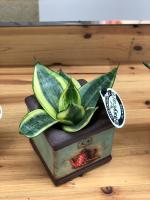Can You Leave Plants in Plastic Pots?
Plastic pots are a popular choice for many home gardeners. They are durable, lightweight, and come in many different shapes and sizes. But can you leave plants in plastic pots? This is a common question among gardeners, and the answer is not as straightforward as you might think.
The Pros of Plastic Pots
Plastic pots are an affordable option for many gardeners. They are also easy to move around since they are lightweight compared to other materials like ceramic or clay. Additionally, plastic pots can come in many different colors, so you can choose ones that best match your décor. Finally, plastic pots do not crack or chip easily, which makes them a great option if you are clumsy or have children or pets running around your home.
The Cons of Plastic Pots
While plastic pots have many benefits, there are some downsides to consider. Firstly, plastic pots can trap moisture, making it difficult for roots to breathe. This can cause water to accumulate at the bottom of the pot, leading to root rot. Secondly, plastic pots are not as eco-friendly as other materials like clay, which can be recycled or repurposed. Lastly, plastic pots can degrade over time due to UV light exposure, meaning they may need to be replaced more frequently than other pots.
How to Keep Plants Healthy in Plastic Pots
Despite the downsides of plastic pots, there are ways to keep your plants healthy. Firstly, be sure to choose the right size pot for your plant. If the pot is too small, it can trap moisture and cause the plant to become root-bound. If the pot is too large, it can lead to overwatering and root rot. Secondly, make sure to drill holes in the bottom of your plastic pot to allow for proper drainage. This will prevent water from accumulating at the bottom of the pot, where it can lead to root rot. Thirdly, consider using a high-quality potting mix that is specifically designed for potted plants. This will ensure that your plant receives the necessary nutrients and moisture it needs to thrive.
Alternatives to Plastic Pots
If you are still unsure about leaving your plants in plastic pots, there are several eco-friendly alternatives to consider. Clay pots are a popular option since they are porous and allow for proper airflow. Additionally, they can be recycled or repurposed when they are no longer needed. Another option is biodegradable pots made from materials like coconut coir, rice hulls, or straw. These pots will break down over time, reducing waste and minimizing your environmental impact.
Conclusion
In conclusion, plastic pots can be a great option for home gardeners, but they are not without their downsides. If you choose to use plastic pots, be sure to take the necessary steps to ensure that your plants remain healthy. Alternatively, consider using eco-friendly alternatives that are better for the environment and will help reduce waste. With a little bit of care and attention, you can keep your plants thriving and enjoy a beautiful home garden for years to come.

 how many times do yo...
how many times do yo... how many planted tre...
how many planted tre... how many pine trees ...
how many pine trees ... how many pecan trees...
how many pecan trees... how many plants comp...
how many plants comp... how many plants can ...
how many plants can ... how many plants and ...
how many plants and ... how many pepper plan...
how many pepper plan...





























